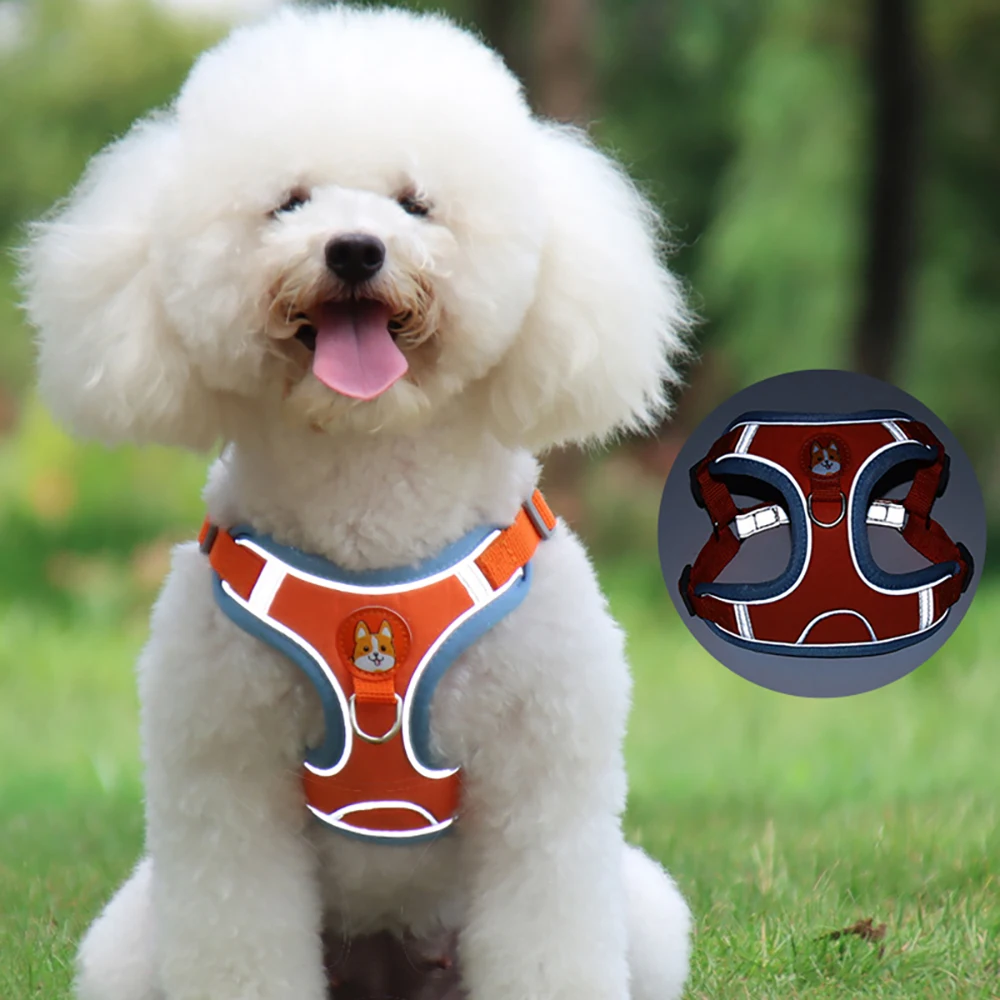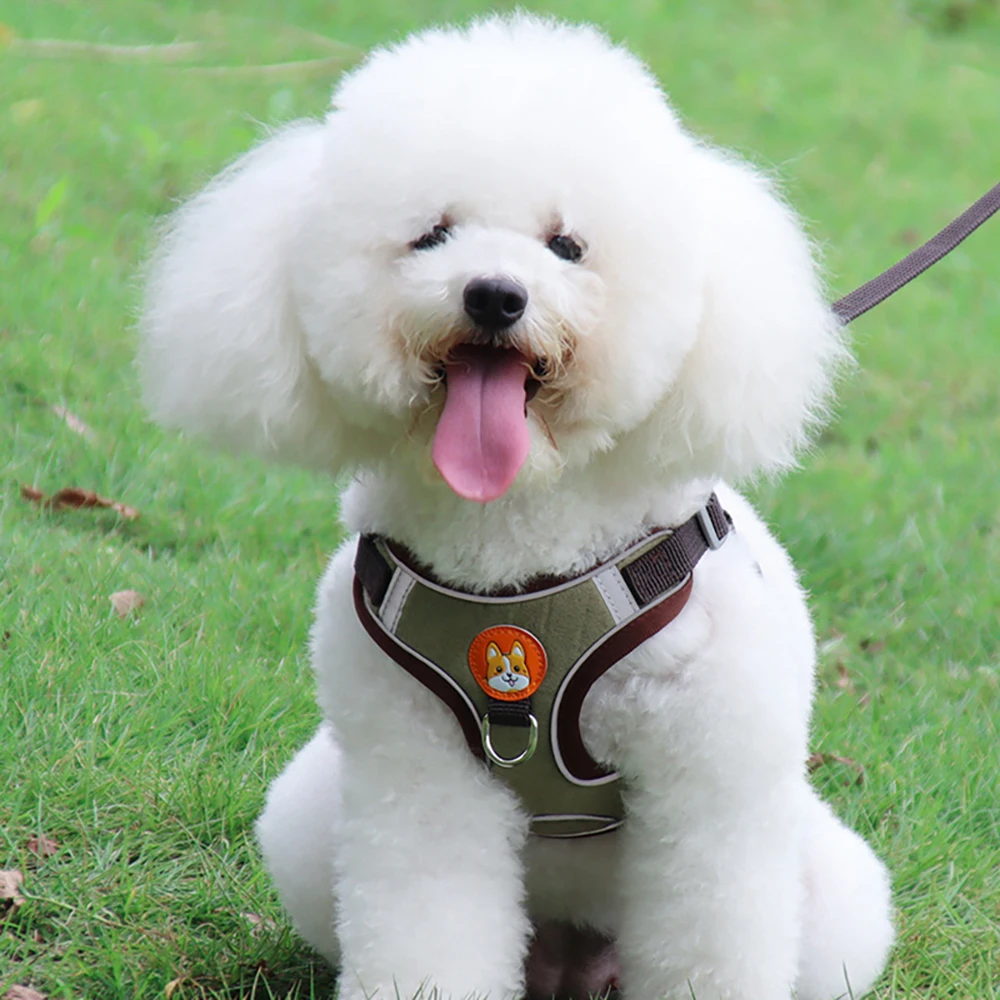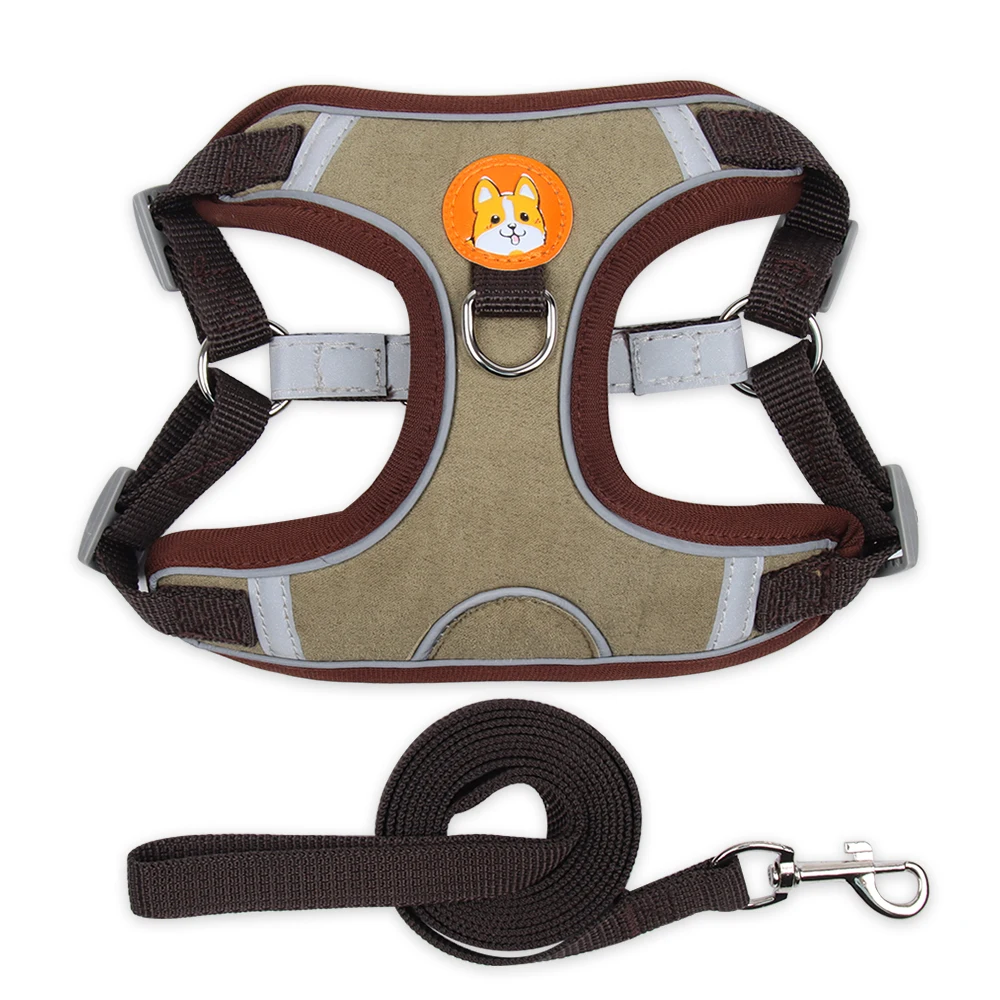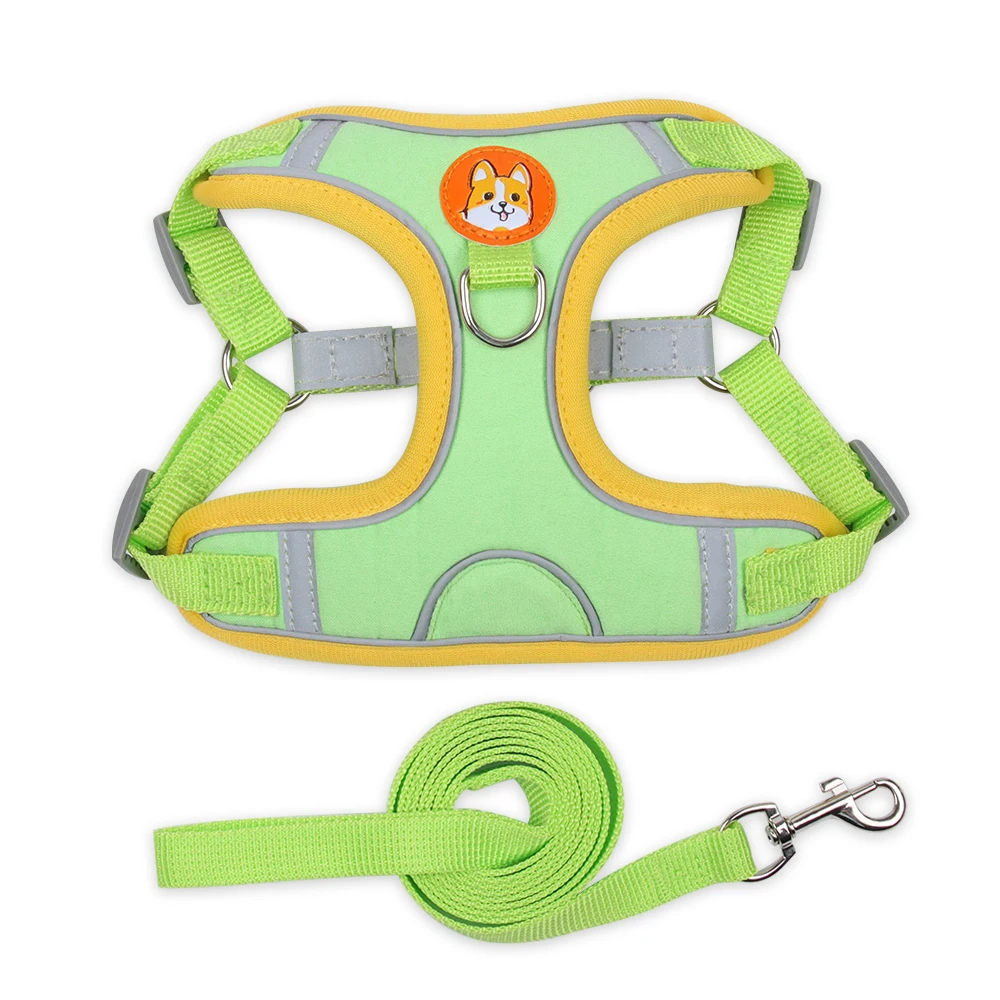Types of Dog Harnesses for Small Breeds
Finding the best dog harness for small dogs starts with understanding the different types available. Here are some common types you’ll encounter:

- Step-In Harnesses: Ideal for calm dogs, these harnesses allow your small dog to simply step in. You then fasten it at the back.
- Vest Harnesses: These offer more coverage and can provide additional warmth. They’re also usually padded for comfort.
- Front-Clip Harnesses: The leash attaches to the chest. This type is good for dogs that pull as it gives you more control.
- Dual-Clip Harnesses: These offer the option of attaching the leash at the front or back, offering versatility in handling your pet.
- Adjustable Harnesses: With multiple points of adjustment, these harnesses can be tailored for a perfect fit, which is vital for small dogs.
- Harnesses with Reflective Strips: These are great for nighttime safety, making your small dog visible in low-light conditions.
Each harness type has its advantages, depending on your small dog’s size, breed, and behavior. A step-in harness might be the right choice for a well-behaved dog that doesn’t pull on the leash, while a front-clip harness could be better for a pup that needs a bit more guidance during walks. When picking out the best dog harness for small dogs, consider your daily walking routine and your dog’s comfort. Always check the fit and adjustability to ensure a snug yet comfortable experience for your furry friend.
Key Features to Consider When Selecting a Harness
When shopping for the best dog harness for small dogs, several key features should guide your decision. Fit, comfort, safety, and ease of use stand at the forefront of priorities. Here’s what to look for:
- Adjustability: Seek harnesses with adjustable straps to achieve a custom fit. A proper fit is crucial to prevent your dog from slipping out.
- Weight: Opt for a lightweight harness that won’t burden your small dog. Heavy harnesses can be uncomfortable and restrict movement.
- Closure System: The type of closure—snaps, buckles, or Velcro—should be easy to use but secure enough to keep the harness in place.
- Leash Attachment Points: Consider harnesses with multiple leash attachment points for better control during walks.
- Breathability: Choose a harness made with breathable materials to ensure your dog remains cool and comfortable.
- Comfort Padding: Padding can provide extra comfort and prevent chafing, especially important for short-haired breeds.
- Reflective Elements: For added safety, especially at night, reflective strips or stitching can make your small dog more visible.
By prioritizing these features, you can find the best dog harness for small dogs that balances comfort with functionality. Remember to weigh each element against your dog’s specific needs for the ideal choice.
The Importance of Proper Fit for Small Dog Harnesses
Selecting the best dog harness for small dogs hinges on achieving a snug, proper fit. An ill-fitting harness could lead to several issues, such as escape, discomfort, and even injury. Here are reasons why a proper fit is critical:
- Escape Prevention: Small dogs can easily wriggle out of a harness that’s too loose. This can be dangerous, especially in public places.
- Comfort: A harness that’s too tight can chafe or restrict your dog’s movement. The right fit ensures comfort during walks.
- Injury Prevention: A well-fitted harness distributes pressure evenly across the body. This helps prevent injuries that may arise from undue strain on your dog’s neck or back.
- Improved Control: A harness that fits well aids in better control during walks. It can help manage pulling without causing harm to your pet.
To ensure a perfect fit, always follow the manufacturer’s sizing guidelines. Measure your dog’s girth, neck, and length as instructed. Most importantly, check the harness’s fit regularly, as your small dog’s size might change due to growth, weight change, or coat length.

Comfort and Safety: Ensuring Your Small Dog’s Well-being
Comfort and safety are key when choosing the best dog harness for small dogs. A comfy harness can make walks enjoyable. A secure one can keep your dog safe. Here’s how to ensure both:
- Soft Material: Go for harnesses made of soft fabrics. They will prevent rubbing and irritation on your dog’s skin.
- Wide Straps: Straps that are wide can distribute pressure evenly. This can reduce the risk of injury.
- Non-restrictive Design: Make sure the harness doesn’t limit your dog’s natural movements. It should allow free leg motion and easy breathing.
- Proper Sizing: A harness that fits well is both comfortable and safe. It should be snug, but not too tight. Make sure there’s enough space to fit two fingers under the straps.
- No Choke Points: Look for harnesses that don’t put pressure on your dog’s neck or throat. This is vital for their safety and comfort.
Remember, comfort and safety go hand in hand. A harness that ticks both boxes is a smart choice for your small dog’s well-being.
Durability and Material: What to Look for in a Harness
Choosing the best dog harness for small dogs goes beyond just fit and comfort. Durability and material quality are just as important. Here are factors to consider:
- Long-lasting Fabric: Look for tough materials like nylon or polyester. These resist wear and tear from daily use.
- Quality Hardware: Metal clasps beat plastic ones. They last longer and are less likely to break.
- Chew-resistant: Small dogs often chew their harnesses. Pick a material that can withstand this habit.
- Water-resistant: If your dog loves puddles or rain, a water-resistant harness won’t get soggy or uncomfortable.
- Easy to Clean: Harnesses get dirty. Choose one that you can easily wash by hand or in a machine.
- Non-toxic Materials: Ensure the harness doesn’t have harmful chemicals. This keeps your small dog safe if they chew on it.
The material of a harness influences its lifespan and your dog’s health. Pick the right one for durability and to avoid frequent replacements. This way, you ensure your investment is sound and your pet stays protected.
Popular Harness Brands and Models for Small Dogs
When searching for the best dog harness for small dogs, you may come across various brands.
- Puppia Soft Dog Harness: This is a lightweight, soft vest harness. It’s great for comfort.
- Kurgo Tru-Fit Smart Harness: Made with durable materials and has a front clip for control.
- Ruffwear Front Range Harness: It offers good adjustability and is durable for active dogs.
- Blueberry Pet Classic Harness: A budget-friendly option that features a range of fun colors.
- PetSafe Easy Walk Harness: Designed to discourage pulling and is very easy to use.
Each brand offers unique benefits. Some focus on durability while others on comfort or control.
When choosing a harness, think about what fits your small dog the best.
- Check if it is adjustable for a perfect fit.
- Make sure it’s made with comfortable material.
- Look for models that offer control, like front clip harnesses.
- Consider your dog’s lifestyle. Some require more heavy-duty options.
- Read reviews from other small dog owners to gauge satisfaction.
Remember to test the harness for a secure fit to ensure safety and comfort for your little companion.

Tips for Introducing Your Small Dog to a New Harness
Introducing a new harness to your small dog requires patience and positive reinforcement. Here’s how to make the transition as smooth as possible:
- Go Slow: Start by letting your dog sniff the harness. Allow them to get used to its presence.
- Associate with Positives: Offer treats when they show interest in the harness. This builds a positive association.
- Gradual Introduction: Put the harness on for short periods. Gradually increase the time as they get more comfortable.
- Praise Generously: Every time you put on the harness, praise your dog. They’ll connect wearing the harness with a positive experience.
- Ensure a Good Fit: Before securing the harness, check that it fits well. A proper fit is key for your dog’s comfort.
- Walk Right Away: Once the harness is on, distract them with a walk. It helps them forget about the new feeling.
- Be Patient: Some dogs may take time to adjust. Never rush the process, and stay calm and supportive.
By following these tips, you can help your small dog adapt to the best dog harness for small dogs. Remember, a relaxed approach will yield the best results and keep your furry friend happy.
Maintenance and Care for Dog Harnesses
Proper maintenance and care are essential to extend the life of your small dog’s harness. Below are some tips to keep in mind:
- Regular Inspection: Check the harness regularly for any signs of wear and tear. Look for fraying straps, loose threads, or damaged buckles.
- Cleaning: Follow the manufacturer’s instructions for cleaning. Hand-washing with mild soap and air-drying is often recommended. Avoid harsh chemicals.
- Proper Storage: Store the harness in a cool, dry place when not in use. This helps prevent mold, mildew, and premature aging.
- Avoid Direct Sunlight: Prolonged exposure to the sun can weaken the fabric. Keep the harness away from direct sunlight when drying it.
- Chewing Prevention: Discourage your dog from chewing on the harness. Offer chew toys as an alternative.
- Timely Replacement: Despite good care, a harness will eventually need replacement. Don’t hesitate to buy a new one if the current harness seems compromised.
Caring for the best dog harness for small dogs adds to their security and comfort. It also saves you money in the long run by avoiding frequent replacements.
